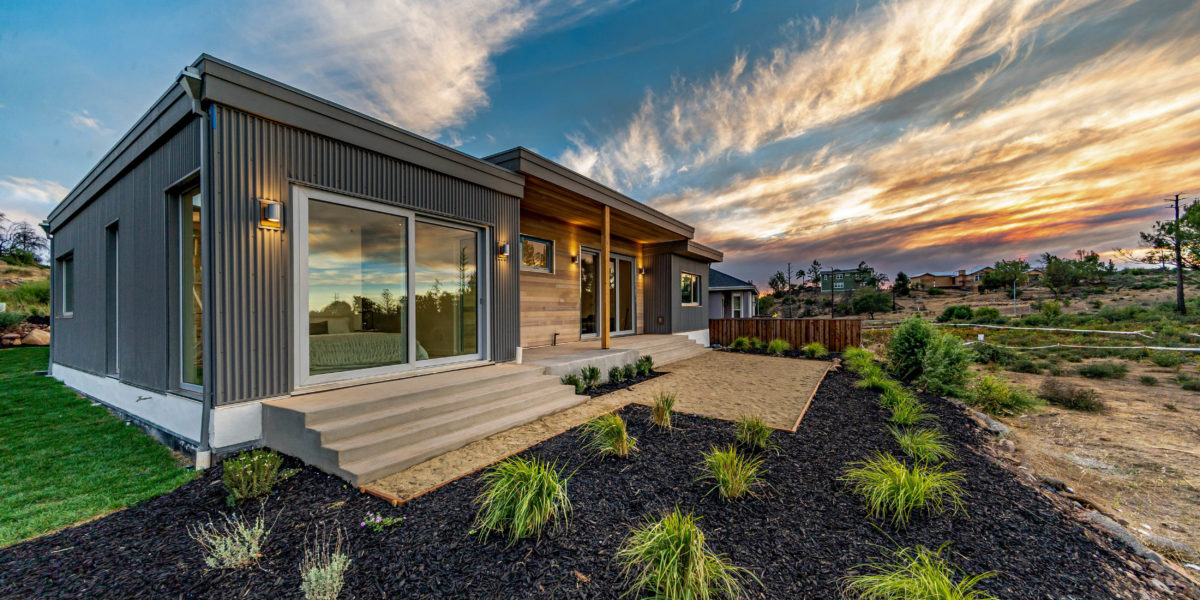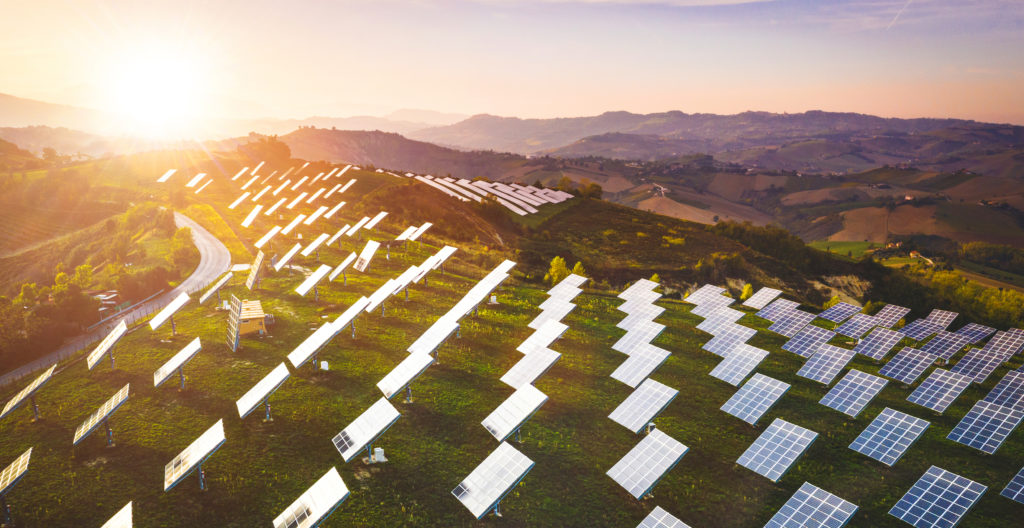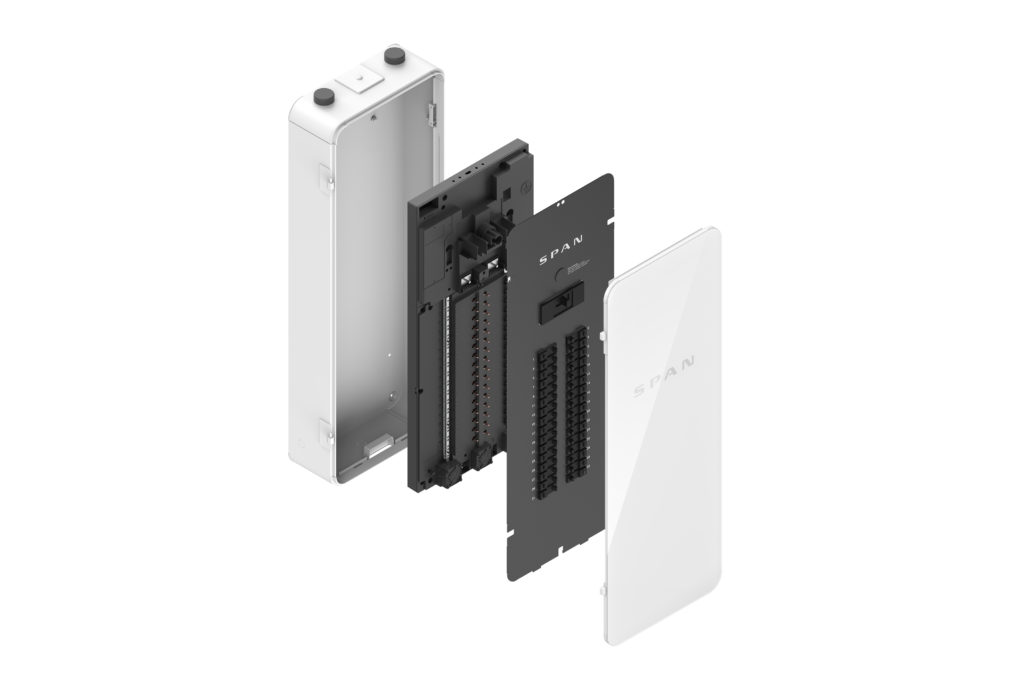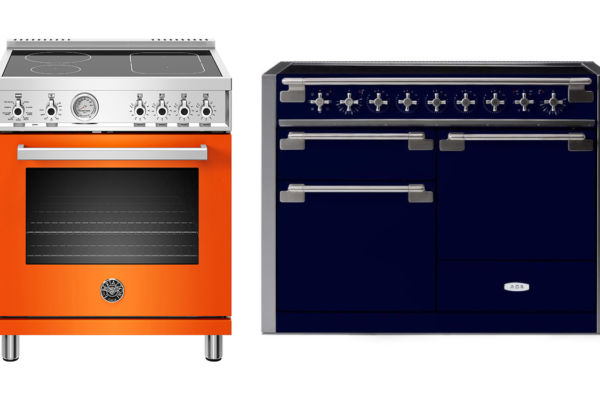
More Homeowners Are Ditching Gas. It’s Time to Flip the Switch to an All-Electric House
If you’re looking for ways to upgrade your home in the new eco-friendly era, here’s where you can start.

The road to a cleaner, safer, healthier planet begins at your front door. Research shows that homeowners have a critical role to play in the race to a zero-carbon world. There are myriad ways we can make a difference, like reducing our dependence on gas to power our homes and putting more solar panels on rooftops. Here’s how to flip the switch on an all-electric house.
When it comes to cleaning up our energy habits—reducing our use of natural gas and electricity generated at coal-and-gas-powered plants—people in the West are ready to change their ways. Nearly three-quarters of Californians said that they would prefer efficient electric appliances powered by clean energy instead of fossil gas, according to a survey conducted by FM3, the California-based research organization, and released by Earthjustice, a nonprofit environmental law firm. And the state energy commission aims to put standards in place that would require newly constructed homes to be electric-ready. In June 2021, on the hottest day in Oregon’s recorded history, lawmakers passed groundbreaking legislation requiring the state to convert to 100 percent clean, “responsible” energy by 2040. At press time, 48 cities in the country had outlawed natural gas in construction of new homes and commercial buildings, according to the Sierra Club’s tally.
Every piece of the technology puzzle that we need to make this dramatic shift in our power supply and our behavior at home already exists.
That switch will require a transition from old ways of thinking and a gradual phase-out of gas-powered appliances. The very same poll cited previously also indicated that more than 60 percent of Californians said they’re not familiar with the cleaner, more efficient electric alternatives available to make that transition. We’d like to change that.

Solar Flair
The technology around solar electricity is improving at such a rapid pace that a swift nationwide transition to entirely renewable, clean energy seems within our collective grasp.
But before we get to the solutions, we should explain the problem.
The facts about greenhouse gas emissions, or GHGs, are sobering. More than 40 percent of all emissions in the United States stem from what experts call “kitchen table” decisions, according to the nonprofit Rewiring America. That includes the kind of car you drive, and how you wash your clothes, heat your house, and cook your food.
If that feels overwhelming, or surprising, you’re not alone. More than 80 percent of electricity in America’s collective power grid is generated by non-renewable sources, like coal and gas. Most households are still connected to that grid, and roughly half have large gas-powered appliances like a furnace, water heater, or stove. That means an overwhelming majority of us are emitting greenhouse gases every time we flip on a light switch or fry an egg over a flame—or even plug in an electric car. Total global emissions reached an all-time high in 2019, despite the dip in our global dependence on coal because natural gas usage increased.
If that doesn’t give you pause, consider that those same appliances are also adding pollution inside of your home, which can cause respiratory issues and shorten lives.
“If we want to decarbonize, we know we need gas out of the home,” says Matt Vespa, a senior clean-energy attorney at Earthjustice. “We had to make adjustments when we stopped cooking on woodstoves. And now we have to make adjustments to electric.”

Circuit Training
The first step on the path toward a carbon-neutral home is a new electrical panel, or circuit breaker, which you’ll need to run a 240-volt outlet to an induction cooktop or a car charger. The Span panel is a high-tech alternative that lets you monitor energy input and output from an app on your phone and spot inefficiencies. The Square D Energy Center smart panel is also app-controlled, and makes solar installation a breeze. “Our generation is faced with an unprecedented energy crisis,” says Richard Korthauer, Schneider’s VP of home and distribution, who says this panel can “future-proof” a house. “We are focused on innovations that will ensure homes of the future are more sustainable, energy efficient, and resilient.”
To reduce air pollution 28 percent by 2025—a target set by the Paris Agreement, an international treaty on climate change signed by nearly 200 nations to mitigate pollution and avoid climate disaster—and decarbonize completely by 2050, the time to phase out dirty energy dependence is now.
We’re not suggesting that you haul your beloved gas stove to the curb. But replacing it with a cleaner cousin when it breaks, or when you move, is not just a good idea—it’s a necessary step. The same idea applies to your clothes dryer, your water heater, and your home heating and air-conditioning.
Innovators like Kurt Goodjohn, who founded the California company Dvele, which makes self-powered modular homes, are showing us how to put it all into play without sacrificing comfort or style.
“We’re the only company in the world that offers a self-powered home that’s totally energy independent, built in a factory environment, in about six months,” says Goodjohn. “Our homes are close to 90 percent more efficient than the typical new homes built today, and even more than older homes. And we don’t allow gas in the home. We’ve had to turn customers away because they wanted a gas stove.”
Through a combination of efficient materials, insulation, and sealing, and all-electric appliances from Bosch and Miele, a Dvele home comes ready-made for living in comfort with modern amenities—and the smallest possible carbon footprint.

Being Conscious in the Kitchen: Start with the Stove
Gas stoves typically account for about 2 percent of a household’s total gas usage, but the fumes they produce are proven to be dangerous. When it’s time to buy a new range or cooktop, be ready to go electric. Here are a few top-performing induction ranges and cooktops for your kitchen.
Sensors placed throughout the home pick up on its occupants’ habits, track how much hot water they use and when, and plot which rooms get warmer or cooler throughout the day. Then smart systems develop more efficient responses. Each home comes equipped with solar panels and a whole-house storage battery, and is designed to be self-powered—meaning that it’s not connected to an aging, increasingly unreliable power grid. We saw what happened when the system failed a few winters ago, when a massive cold front caused power outages throughout Texas and residents went without heat for days.
“When you look at what happened in Texas, we’re learning that we can’t rely on an aging power grid,” Goodjohn says. He and his colleagues imagine a future where neighborhoods behave like self-sustaining power plants, and individual homes with storage batteries and panels are linked to share clean energy. They’ve recently broken ground on a 28-home development in the California city of Costa Mesa with this in mind.
Current homeowners who aren’t in the mood to move, or to build a modular home, can take some cues from Dvele and adapt some of the brand’s strategies for their existing homes.
Start by swapping out your electrical panel to accommodate new electric appliances, car chargers, and solar panels. Replace aging or malfunctioning appliances with electric versions or plan in advance to replace them when they break. Install solar panels with an affordable battery storage option. Try upgrading your heating and A/C to mini-split ductless systems in the rooms you use most to avoid the waste of a whole-house system.
There are dozens of decisions you can make every day, like brewing tea with an electric kettle instead of firing up the stovetop, that can add up to a difference.
Start small—or swing big. It’s up to you. It’s up to us.
Make the Switch
These are the products that burn the most gas in your home—contributing to the more than 48 metric tons of carbon dioxide released by the average home in the U.S. every year—as well as state-of-the-art options that could replace them. (Bonus: Many are eligible for rebates.)
- Clothes Dryer: You may not even know if your clothes dryer uses gas or electricity. Peek behind it to check: If it’s plugged into a regular 120-volt outlet, and there are two hose attachments (one is for water, the other—it’s usually yellow—is gas), it’s heated with gas. An electric clothes dryer, like most high-powered electric appliances, needs to be plugged into a special 240-volt outlet.
- Water Heater: A standard tank-style, gas- or propane-powered water heater wastes energy to maintain the temperature of 40 gallons of water. An electric tankless water heater uses 20 to 30 percent less energy and is clean burning.
- Furnace: HVAC uses half of the energy in U.S. homes. If you live in the West, chances are your heat comes from natural gas. Upgrade to an electric heat pump from a brand like Trane or American Standard to replace both heat and AC.
Small Appliances That Save Big on Energy
If stepping off the gas completely in your kitchen isn’t an option, reduce your fossil fuel consumption with these cool countertop appliances.
Read the Current Issue Here!
Get one year of Sunset—and all kinds of bonuses—for just $24.95. Subscribe now!
